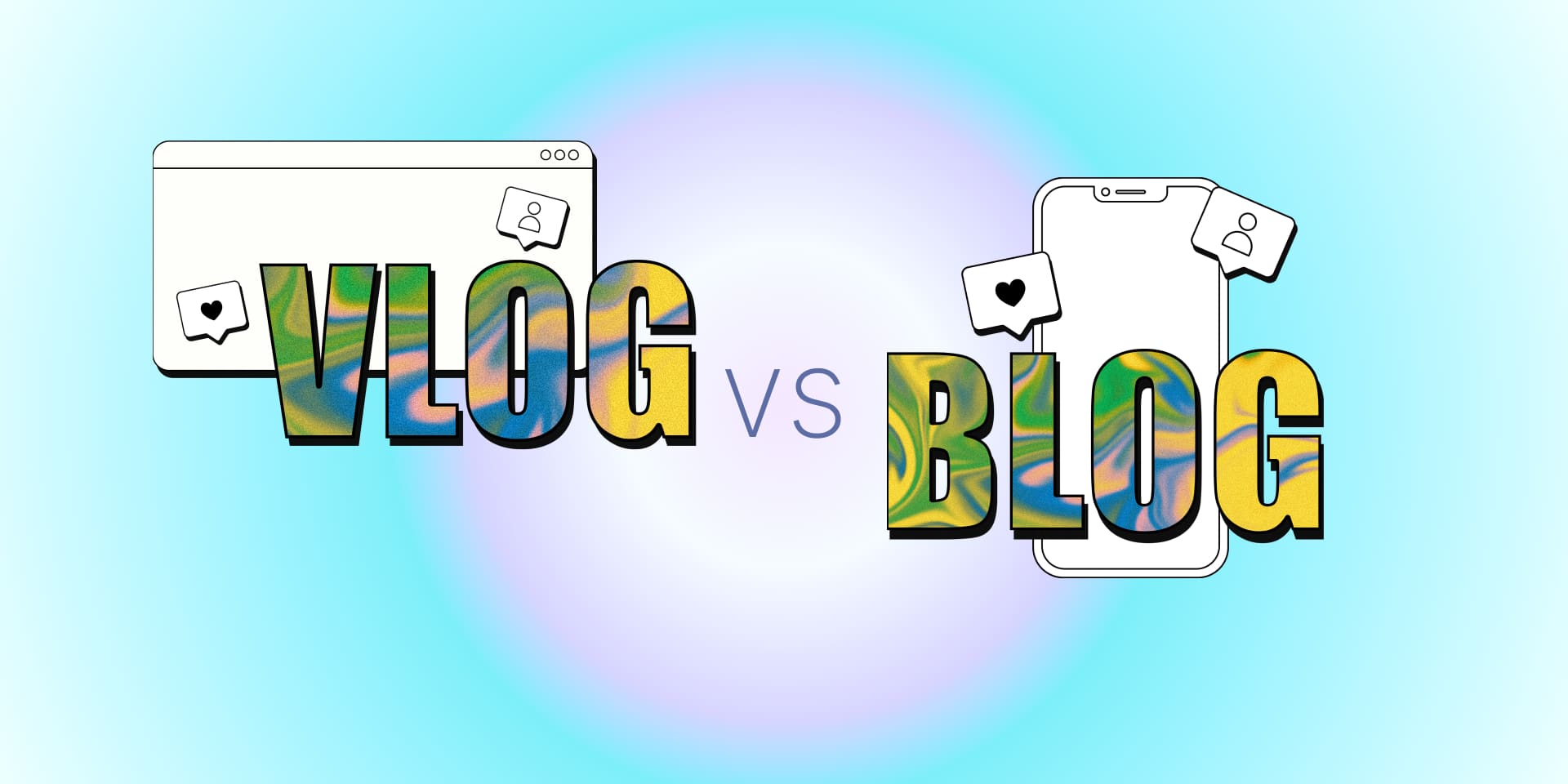Blog vs vlog has been a curious topic for those trying to get into content creation.
Our screens are like windows to a world that always shows us something new and exciting. Today, with so much different stuff coming at us all the time, brands and businesses have a great chance to connect with us in meaningful ways. It’s a beautiful time to make genuine connections with our audience.
However, with the rise of social media, the world of content creation has changed. And with that, our biology has changed. The constant stream of information and visual stimuli we receive daily reshapes how our brains process information. Our attention spans are shorter, and our ability to multitask has increased, adapting to the rapid pace of digital communication.
With our short attention spans, content has become shorter, too. Whether it’s a blog or a vlog, we are constantly finding new ways to create content that captures attention quickly and holds it.
That being said, vlogging and blogging remain an excellent way for brands to tell their story strategically where they can form an intimate and engaging connection with their audience.
Let’s explore which medium is better for your digital marketing strategy and what opportunities each presents.
Blog vs Vlog: Meaning
Blogs and vlogs are two popular ways to create content online, each appealing to different audiences. And, of course, to varying types of creators.
While blogs appeal to readers looking for depth, detail, or practical guidance, vlogs attract viewers who enjoy engaging, fast-paced content.
Many successful digital marketers use blogs and vlogs to broaden their reach and impact, adapting their methods to the advantages of each format to meet their goals and the needs of their audience.
Both content forms have distinct advantages and can be used strategically to enhance digital marketing efforts.
However, if you are a creator trying to decide which format is suitable for sharing your life online, let’s explore each one.
What is Blog

Blogs have existed since the late 1990s. When they first emerged, personal blogging offered a fresh and accessible way for individuals to share their thoughts, experiences, and insights with a global audience.
Blogging was revolutionary because it gave a voice to many who previously lacked a platform to express themselves, particularly those who enjoyed writing and sharing their perspectives.
If you enjoy writing and need help beginning, blogging can be an excellent starting point. It allows you to hone your writing skills, explore various topics, and engage with readers worldwide.
Blogs can also include images, links, and occasionally embedded videos. That is why they are a great way to share complex ideas, research, and topics with precision and detail.
Today, blogs remain a vital tool for enhancing online visibility. They serve personal bloggers and businesses aiming to establish a solid online presence through insightful articles and effective corporate communication.
Blogs have evolved to become a key component in digital marketing strategies. They help improve SEO rankings, build brand authority, and foster a deeper connection with customers.
Whether a multinational corporation or a small startup, blogs provide a platform for companies to share detailed information about their products, industry insights, and company values.
This ongoing relevance of blogging ensures that it remains an integral part of the digital landscape, continually adapting to new trends and technologies.
What is Vlog

Conversely, Vlogs, meaning “video blogs,” have existed since the early 2000s. It became popular with the emergence of YouTube in 2005. YouTube provided a centralized platform where people could easily upload and share their content with a global audience. This led to a rapid expansion in the number of vloggers and has continued to grow as a popular form of content creation.
If you’re an outgoing creator eager to share your life and connect openly with your audience, vlogging is an excellent choice. It lets you speak directly to viewers, showcase your daily activities, and foster a more personal connection.
Vlogs are powerful for storytelling, showing processes or products in action, and conveying personal experiences or emotions.
To connect more deeply with your audience, you should create vlogs. They allow your audience to hear you directly and see your life, experiences, and thoughts more naturally and directly.
Producing a vlog requires more equipment, such as a camera, microphone, and editing software. While the initial setup might be more complex and potentially costly, vlogs can be quicker to produce once the creator is proficient with the technology.
When it comes to reaching a broad audience, vlogs are particularly effective because they are easy to consume and require less effort from viewers compared to text-based content. Also, vlogs make it much easier to interact and engage with the creator directly. Videos can quickly go viral and reach a broader audience.
That is why brands and companies leverage vlogs, too. UGC is one of the most effective ways to market your products. Brands and companies often encourage their customers to create and share their video content, showcasing real-life uses of products or sharing personal stories related to the brand. These user-generated videos enhance authenticity and significantly broaden the reach as fans share these videos within their networks.
Vlogs also provide an excellent platform for live-streaming events, product launches, or Q&A sessions, which can further increase viewer engagement.
Blogging and Vlogging Difference
When comparing blogs and vlogs, each has benefits and appeals to different audiences.
Audience Engagement
Blogs engage readers through written content that effectively conveys complex information or arguments. Readers can go at their own pace while reading blogs, which is particularly beneficial for educational or informational content.
In contrast, vlogs engage viewers with visual and auditory stimuli, creating a dynamic interaction that can feel more immediate and personal. Videos capture and hold attention more effectively, especially among audiences who prefer quick, engaging visual content.
Content Creation
Creating a blog involves writing and may require less technical equipment than vlogging. A blogger only needs their brain. A good grasp of language and the ability to express ideas clearly through text is usually enough.
On the other hand, creating a vlog requires video recording equipment, the ability to edit videos, and, often, more time spent on production. This can include planning, shooting, and editing videos, which might be a higher entry barrier than blogging.
SEO and Discoverability
Blogs are highly effective for search engine optimization. Because people typically enter text-based queries into search engines, these engines can index text formats more quickly and effectively. The user’s search habits make blogs an excellent tool for boosting organic search traffic and improving online visibility.
While vlogs can also be optimized for search through titles, descriptions, and tags, they rely more heavily on the platform’s algorithms and the visual engagement they generate.
When weighing the options of a blog vs vlog, it’s essential to consider what best suits your goals, abilities, and audience.
Both blogging and vlogging offer distinct advantages that can help you reach and engage with various demographic groups.
If you’re still unsure which content format is best for you, let’s examine the pros and cons of blogging and vlogging.
Pros and Cons of Blogging

You must already have an idea of the pros and cons of blogging.
However, as we dive deeper, you will have a better idea of how blogging can be used in your marketing strategy.
Pros
- People who write blogs can establish themselves as experts by providing informative and well-researched content. You can use guest blogging to increase your brand authority if you are a brand.
- Blogs can cover any topic, from personal finance and technology to travel and cooking. This allows bloggers to create content for specific niches.
- Starting a blog is cheap. Many platforms offer free options, and even paid subscriptions are generally affordable.
- Blogs offer various ways to generate income, including advertising, affiliate marketing, sponsored posts, and selling digital products or services.
- Blogs are excellent for providing detailed analyses and exploring complex ideas.
- Blogs are ideal for search engine optimization. You can significantly increase your organic traffic from search engines by consistently updating your blog with quality content.
To streamline this process and enhance your SEO efforts, ContentGo.AI offers outstanding blog templates. These data-driven tools are designed to help you create content that ranks high on search engine results pages.
Additionally, with our SERP tool, you can gain valuable insights to inform your content strategy. These features allow you to integrate critical data directly into your content briefs and craft compelling blog posts in minutes, making the entire process efficient and effective.
Cons
- Creating blog content can be very time-consuming. It involves research, writing, editing, and updating posts to keep the blog active and relevant.
- Building a blog’s audience can take a long time. Unlike viral video content, blog content often requires sustained effort over months or years to see substantial traffic results.
- Blogging demands strong writing skills. A blogger must be able to communicate ideas clearly in an engaging way, which can be challenging for those without a background in writing.
- Millions of blogs are out there, and standing out in such a crowded space can be difficult.
- Bloggers need to create new content regularly to keep readers interested and boost their site’s search engine ranking. This can be a big challenge, as it requires a lot of time and creativity.
- You should have substantial knowledge of how to host a platform, update the site, and secure it from hackers.
Pros and Cons of Vlogging

While vlogging can be an exciting way to connect with a broader audience, starting can be daunting. Vlogging often requires you to share many aspects of your life with strangers, which can feel intimidating. Although this close connection with your audience can be rewarding, it’s essential to be aware that online bullies can be an issue, something that’s less common with blogs.
Despite these challenges, vlogs can significantly enhance your brand’s engagement. However, it’s crucial to weigh the pros and cons of vlogging to determine if it fits your brand’s marketing strategy.
Continue reading to learn more about the advantages and potential drawbacks of using vlogs and content creators for your brand.
Pros
- Vlogs often feature the creator speaking directly to the camera, which creates a more personal and engaging connection with the audience.
- Videos are ideal for tutorials, product reviews, and expressive storytelling. It is easier to make complex topics more accessible and engaging.
- People watch more videos and engage more with them. The same thing cannot be said for most of the blogs.
- Viewers are likelier to share, comment, and interact with video content, which can help spread its reach faster.
- Vlogging on platforms like YouTube offers various monetization options, such as ad revenue, sponsored content, merchandise sales, and fan funding through services like Patreon.
- People share videos more across multiple platforms, including social media, which can quickly help a vlog reach a broad and diverse audience.
- Getting instant feedback through comments and view counts on videos is much easier, giving vloggers quick insights into what content works and what doesn’t.
Cons
- You should invest in good camera equipment, microphones, lighting, and editing software, which can be expensive.
- Effective vlogging requires many skills. It involves understanding videography, editing, sound management, and sometimes graphic design.
- Producing and editing videos can be very time-consuming. The process includes planning content, filming, editing, and managing uploads and interactions.
- Vloggers often share personal experiences and aspects of their private lives, which can lead to privacy issues and unwanted attention.
- Vloggers often rely heavily on platforms like YouTube. When these platforms change their algorithms or policies, sometimes that negatively impacts visibility and revenue.
- What is popular can change rapidly, requiring vloggers to adapt quickly to maintain their audience.
Blog vs Vlog Examples
Blog Examples
The examples below are great if you want to learn more about marketing, SEO, and how to create an effective content strategy:
1 – Seth’s Blog

Seth Godin’s blog covers various topics related to marketing, the spread of ideas, and personal development. It is one of the best blogs to get inspired about personal branding and development.
If you want to explore how artificial intelligence (AI) can enhance content creation, whether you’re a marketer, content creator, or a brand looking to elevate your content strategy, our blog is for you. Be sure to visit ContentGo.AI Blog.
3 – Backlinko

Brian Dean is the brains behind Backlinko, which provides actionable SEO tips, strategies, and case studies. Brian often shares in-depth case studies, showcasing real-world examples of successful SEO strategies. If you are interested in SEO, content marketing, and improving your online presence, check out Backlinko.
4 – CopyBlogger
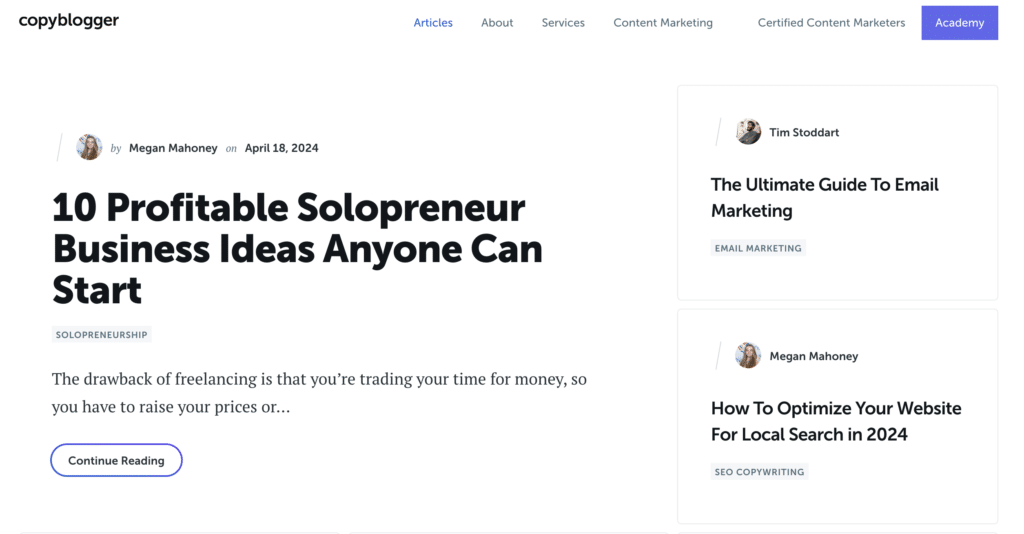
CopyBlogger is a go-to resource for writers and content marketers. It offers advice on crafting compelling online content, with a strong emphasis on writing techniques. Topics include content marketing, copywriting, and effective communication. If you want to improve your writing skills, CopyBlogger is a valuable resource.
5 – Moz

Founded by Rand Fishkin and Gillian Muessig in 2004, Moz is well-known for its search engine optimization (SEO) expertise. Moz Blog provides beginner guides and advanced strategies for improving search engine rankings. Topics range from keyword research and link building to technical SEO and content optimization.
If you’re serious about mastering SEO, Moz’s blog is a must-read.
Vlog Examples
Typically, brands do not share vlogs. We wanted to give examples of brands that actively share vlogs and take advantage of the format:
1 – Redbull

Red Bull is known for its extreme sports and adventure content. Their YouTube channel features adrenaline-pumping vlogs, including skydiving, snowboarding, and Formula 1 racing. Red Bull’s vlogs capture the spirit of adventure and resonate with thrill-seekers worldwide.
2 – Tesla
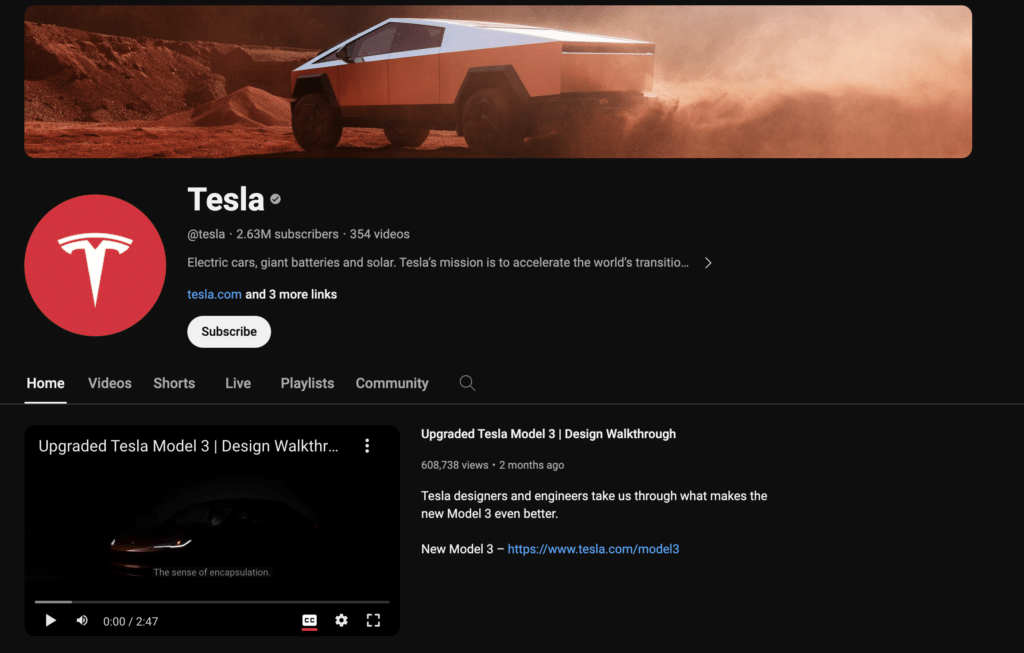
Tesla uses vlogs to educate and engage its audience. Elon Musk occasionally shares behind-the-scenes glimpses and updates on Tesla’s innovations. Tesla’s vlogs provide insights into sustainable technology and the future of transportation.
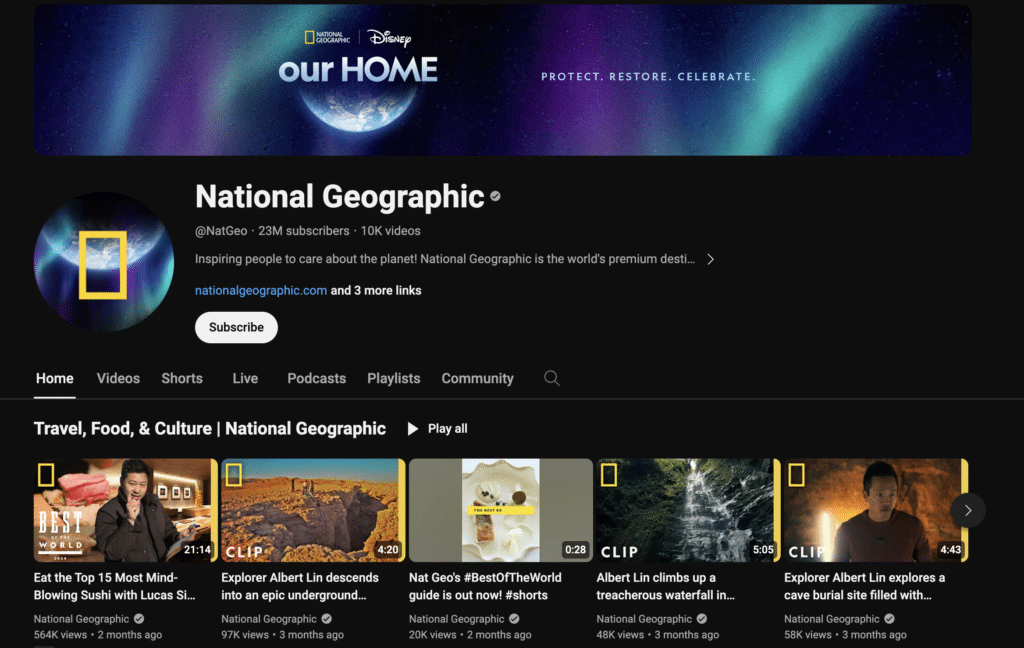
National Geographic shares captivating vlogs that showcase the wonders of our planet. Their videos cover wildlife, natural landscapes, and cultural experiences. National Geographic’s storytelling approach inspires awe and curiosity.
4 – GoPro
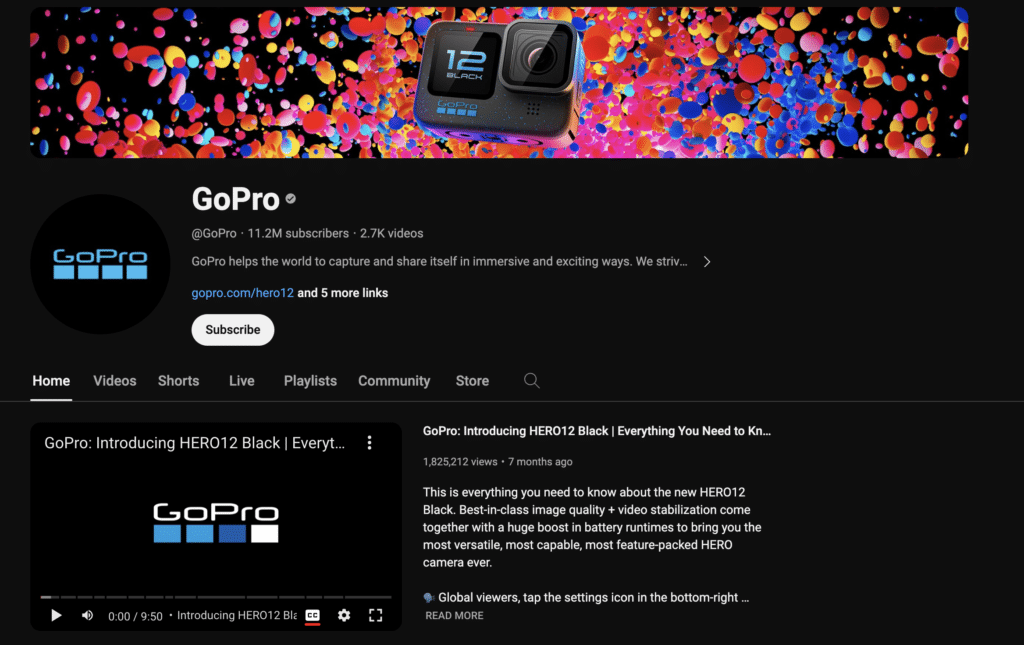
GoPro, the biggest action camera name, has significantly leveraged video marketing. Their thrilling and visually captivating vlogs showcase extreme sports, adventures, and user-generated content. GoPro’s success demonstrates the power of immersive video experiences.
5 – Patagonia
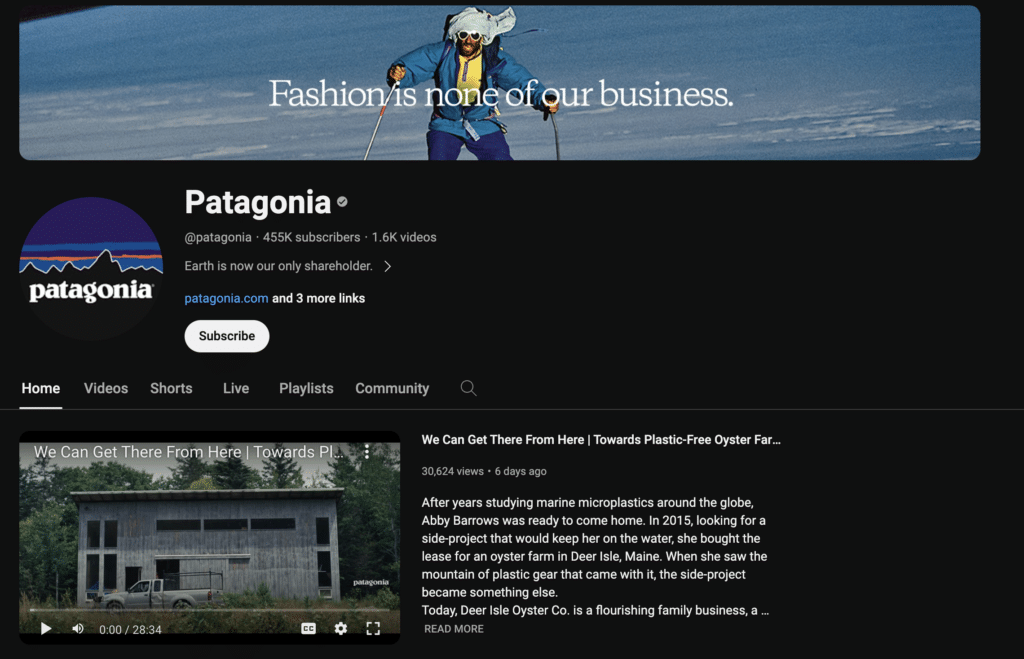
Patagonia, an outdoor clothing brand, shares vlogs highlighting environmental activism, outdoor adventures, and sustainability. Their commitment to storytelling through video resonates with their eco-conscious audience.
Blog vs Vlog: Income Stream
You can earn money by blogging or vlogging as a brand or an individual creator. However, the paths and potential profits can differ between blogs and vlogs.
Blogs can generate income through ads, affiliate marketing, sponsored posts, and selling digital products or services. And for brands, blogs generate A LOT of leads. Studies show that companies with blogs receive 55% more website visitors than those without. When readers find your content helpful, they are more likely to trust your expertise and consider your business when purchasing.
And, of course, you can use blog posts strategically to offer lead magnets such as e-books, whitepapers, or checklists. Readers interested in the topic can exchange their contact information (like email addresses) for your valuable resource. All the collected leads can be nurtured through email marketing or other channels.
On the other hand, vlogs often rely on ad revenue, sponsorships, and merchandise sales. Vlogs allow you to engage with your audience visually, creating a stronger connection. They also enable you to demonstrate your products or services in action. 90% of consumers say that videos help them make purchasing decisions.
Remember that monetizing blogging and vlogging will depend on the creator’s content strategy, audience size, and engagement levels.
Tips to Success with Blogging or Vlogging
Know Your Audience
Understand who you’re creating content for. Whether vlogging or blogging, you must establish a strong connection with your audience and tailor your message according to your audience’s needs and interests. Engage with comments, emails, and social media messages. What questions do they ask? What excites or frustrates them?
Use this insight to tailor your content. If your vlog audience wants more cat videos, unleash the feline cuteness. If your blog readers crave gluten-free recipes, whip up some quinoa muffins!
Consistency
When your audience knows you’ll upload every Tuesday, they eagerly await your next adventure or tutorial. Or when you are posting constantly, you signal that you’re an active creator, which boosts your chances of appearing in recommended videos and search results. Consistency is the key to build trust and keep your audience engaged.
Quality Over Quantity
Your audience will overgrow when you focus on creating well-researched, in-depth articles or videos that provide unique insights, thorough analysis, and valuable information. Crafting a single high-quality piece may take weeks, and maintaining it over time requires ongoing effort. High-quality content can attract significant traffic and become evergreen resources.
Keyword Optimization
Keyword optimization plays a crucial role in both vlogging and blogging. When you write blog posts, targeting relevant keywords ensures that your content aligns with what people are searching for. High-ranking blog posts consistently attract organic traffic over time. Similarly, in vlogging, using relevant keywords in video titles, descriptions, and tags helps your videos surface in search results – resulting in views and engagement.
Engaging Introductions
It’s crucial to capture your reader’s or viewer’s attention within the first few seconds, significantly since our attention spans have shrunk to just three seconds. Whether it is a video or a blog post, begin with a compelling hook. Pose a question, share an anecdote, or present a surprising statistic. Quickly establish why this topic matters. Address the reader’s pain point or curiosity. Remember, a captivating introduction sets the tone for the entire piece.
Always Strive for Quality Content
In conclusion, whether you lean towards blogging or vlogging, the key is to maintain quality, stay consistent, and truly understand and address the needs of your audience.
This approach will ensure that whether your content is consumed through words or video, it will leave a lasting impact, foster connections, and drive your digital marketing success forward.
However, if you are a blogger or are considering becoming one, or if you’re thinking of starting a company that will use blogging as a critical marketing strategy, consider using a tool designed to elevate your content game.
ContentGo.AI is a versatile tool that helps produce high-quality, SEO-optimized articles, even for niche topics. It offers comprehensive features like keyword research and SERP analysis and can quickly generate multiple pieces of content.
These features make ContentGo.AI ideal for freelancers, SEO specialists, and business owners looking to enhance their online presence across over 110 languages.
Sign up today to take your blogging to the next level and get your first 20 free content!
